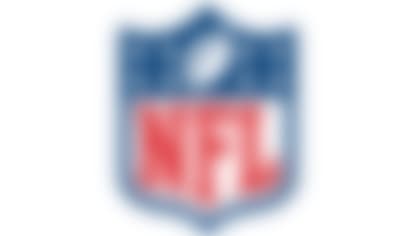The year was 1987, and I was carrying all of Bill Walsh's NFL Scouting Combine material as we entered the Hoosier Dome to observe the quarterback prospects, who were preparing for their workouts. I always loved this time of the year with Coach Walsh. It was like being in my own private player-evaluation class with Walsh providing wisdom on subjects ranging from players to coaches to running an organization. I valued each day and the lessons taught.
On this particular day, Walsh was passing through the rows of the arena looking for his seat among the other coaches on the staff. Suddenly, he stopped walking and turned his head towards the field. He called out to me, asking about that kid on the field, pointing to Rich Gannon from the University of Delaware. I gave Walsh an instant scouting report on Gannon as he continued to watch him move and throw. Five minutes later, he told me to go and tell Mike Holmgren to put Delaware on his scouting list and work out Gannon. What made Walsh stop? What made him instantly know Gannon had pro potential? Why could Walsh see what many others evaluators failed to examine?
Clearly, Walsh had a gift. It was on display time and time again. From being able to spot Gannon to knowing that Joe Montana could be a star in his system to being able to rehabilitate Steve Young's career when many said he was a runner, not a passer. Walsh just knew, and as he often said to me, there are few people in the world who can coach a quarterback and even fewer who can evaluate them. And he was so right about that.
Since 2000, 28 quarterbacks have been drafted in the first round. Of that total, only 14 were starting-caliber players with the potential to carry their team to the playoffs. A major portion of that 14 has come in the last three years, with six first-round picks since 2008 now starting for their respective teams. So why is their only a 50 percent success rate with quarterbacks taken in the first round?
Let's examine a few areas of importance when evaluating a quarterback.
System adaptability
The most successful teams at evaluating the quarterback always seem to have an offensive system in place first before searching for a player who meets all the requirements. However, it is not as simple as that. How the system is taught and how it adapts to players' strengths and weaknesses also needs to be factored into the evaluation.
For example, had the 49ers taken Tom Brady in the third round of the 2000 draft instead of Giovanni Carmazzi, they might have had more Lombardi Trophies to display. But someone in the organization thought that Carmazzi was a better fit for what they did than Brady, so the 49ers ended up selecting a player who never threw a pass for the organization in the third round while Brady had to wait until the sixth round to be selected.
Meaning, even when you have a system in place, there are mistakes made in understanding which quarterback is adaptable. And when you have too many people involved in the evaluation process, the chances of getting it wrong grow.
Not everyone in the organization knows the system requirements, and the decision-makers who allegedly should understand the details of the scheme struggle to adhere to those guidelines. They often get caught in a trap, trying to convince themselves that a player can adapt to the system rather than facing the fact he might struggle.
Think Kyle Boller in 2003. The Ravens felt Boller's arm and athletic talent could blend perfectly into Brian Billick's offense. However, for all the skills that Boller brought to the field, he was never quick-minded in his decision-making, nor did he have a sense of rhythm or timing that was needed in the system.
The Physical Skills
All successful quarterbacks have the physical skills to make every throw, thus forcing the defense to defend each blade of grass on the field. Compromising on arm strength is never wise, as weak arms become a liability in any system.
A few weeks ago, I was talking to Phil Simms about arm strength, and he made a great point relating to the game tape. Simms thinks the best way to evaluate arm strength is to determine how many games it takes a quarterback to make 20 essential NFL throws. For example, Ryan Mallett displays all 20 in just one game. Meanwhile, it might take Jake Locker 10 games to show his arm skill. The point: the more time it takes, the less confidence a team has in its quarterback making those throws. The longer the time span, the clearer it becomes that those throws are not what the prospect does best.
Just having arm strength does not ensure success. Accuracy and the ability to throw the ball with it on all three levels is critical. Along with arm strength, successful quarterbacks have the ability to be quick-minded with the ball and can anticipate routes, not having to wait for the receiver to be open. When the Browns took Brady Quinn, he failed to have these qualities.
Deliveries and arm motions are always different, but subjected to intense scrutiny. In reality, they hold little meaning. As long as the ball can be delivered in a timely fashion without getting batted down at the line of scrimmage, we will continue to see mechanics ranging from Philip Rivers to Carson Palmer. Like golf swings, successful quarterbacks never have the same delivery. They just always have the same result.
The other physical factor is body type and size. Smallish quarterbacks without the ability to handle the pounding each week can never be effective for 16 games. The abuse a quarterback takes is enormous, and those hits impact the lower body, which ultimately is where all the power to deliver the ball must come from. Quarterbacks like Ty Detmer (6-foot, 189 pounds) can come in and play well for several games, but eventually the pounding has a residual effect and makes the smaller player ineffective.
Timing, rhythm, arm strength, and body type are essential qualities for a successful quarterback that cannot be compromised.
The leader
When looking at the 14 failed quarterbacks of the 28 who were drafted in the first round since 2000, the one common thread is their lack of leadership and capacity to take over a locker room. In part, this might be because of their play on the field. It also points to the fact that they never were actual leaders in college. Their success was more due to their play than leadership.
Risky business of drafting a QB
The draft is far from an exact science, especially when it comes to taking a quarterback. In fact, the success rate is basically the same as flipping a coin. **More ...**
No quarterback is going to be successful unless he can win over his teammates, outwork everyone and be the instrument that drives the team. This cannot be taught. It must be a natural part of any quarterback that finds success. Some might say leaders can be made, but not when it comes to quarterbacks.
While football character and leadership might not be the same quality, they go hand in hand. A star QB must let his actions speak louder than his words. He must be viewed as the hardest worker and most prepared, otherwise he will be seen as a phony and never be able to lead other players. This is essential, and all great quarterbacks have this trait. This trait can be extremely hard to evaluate on draft prospects.
So why?
If these areas are so clear, why are there so many mistakes made at quarterback? In reality, as Coach Walsh said, few can evaluate these areas correctly. And the more evaluators a team has involved in the process, the chance for a misevaluation increases. More evaluations just means more opinions -- it never results in a better way to reduce errors. As someone once said, they never dedicated a monument to a committee. When there is a committee evaluating quarterbacks, chances run high that mistakes will be made.
There might be as many as five quarterbacks drafted in the first round this year, and we all realize not all of them are likely to become winners. We also know that the recent odds dictate that only two of the five will be successful. The key will be evaluating which two.
While there is a perception about Mallett, the reality is much different. With that in mind, my money is on Mallett and Blaine Gabbert being the two to succeed. Each fits the criteria above and has the skill set to lead a team.
Only time will tell who is right.
Follow Michael Lombardi on Twitter @michaelombardi.



